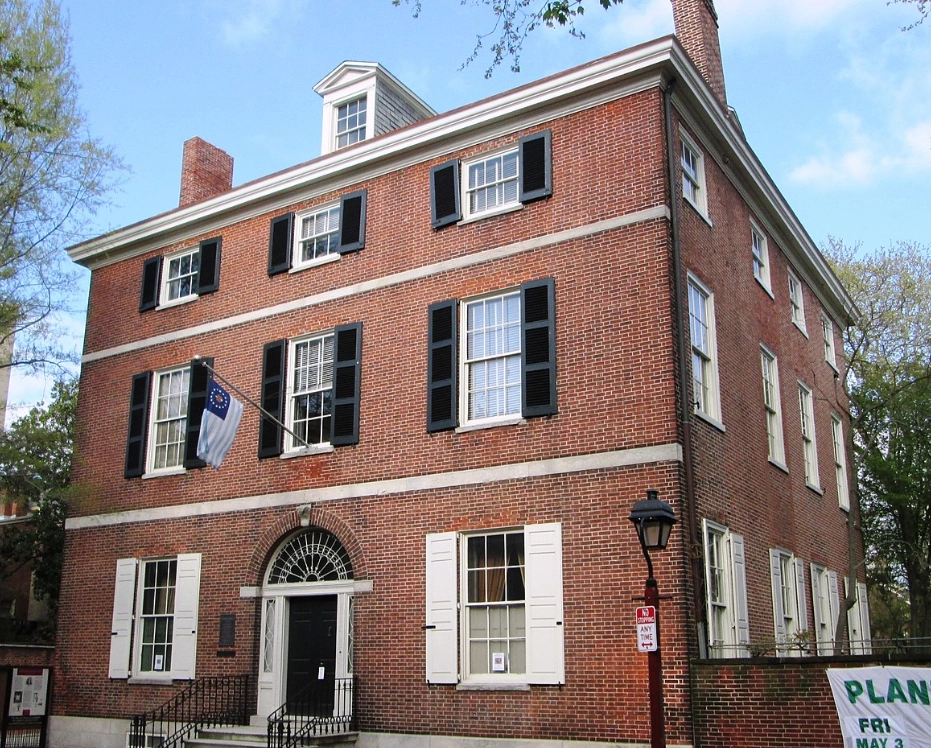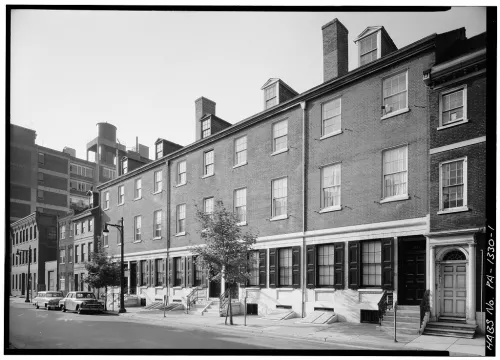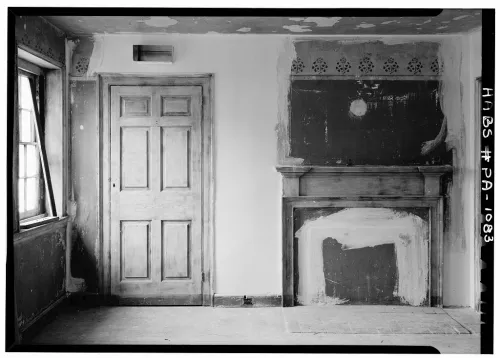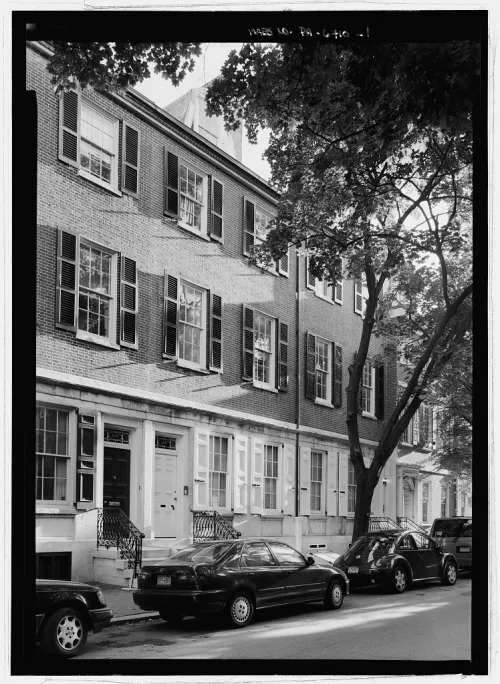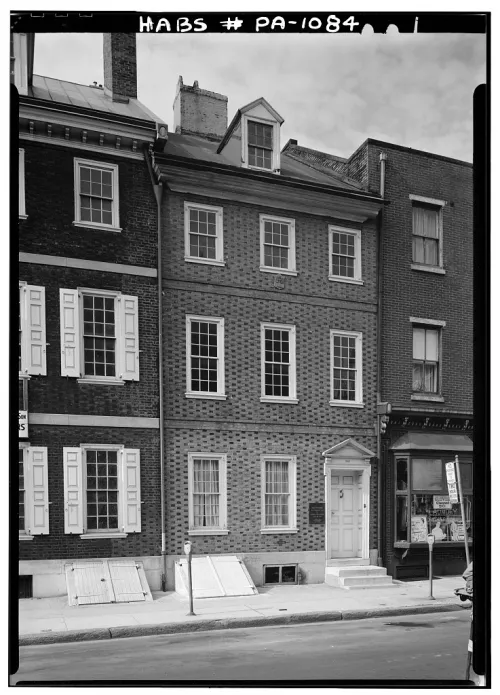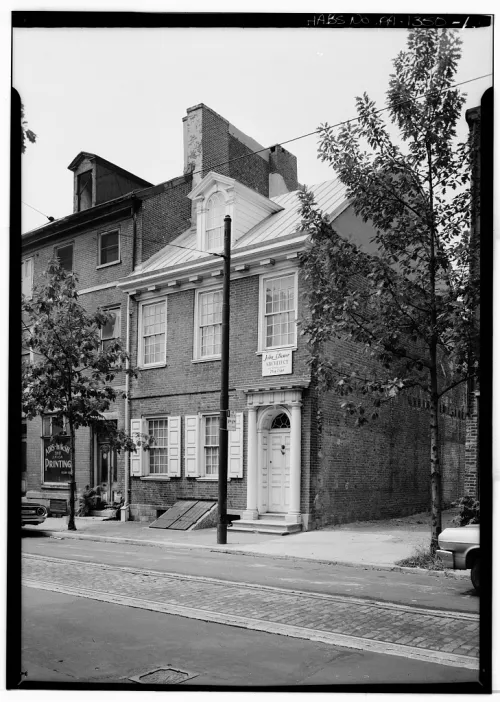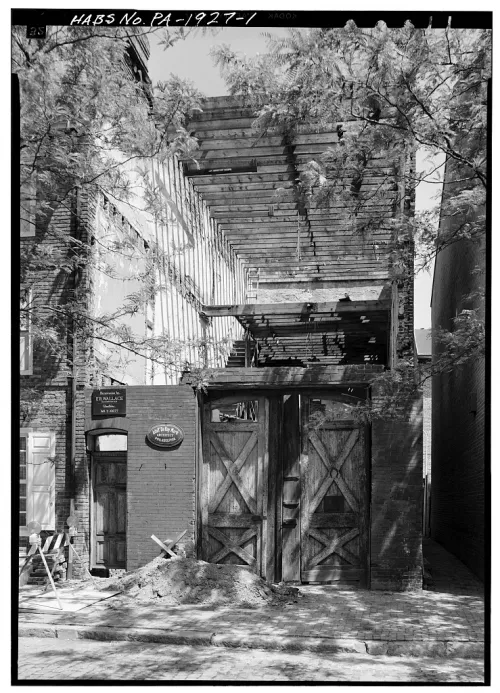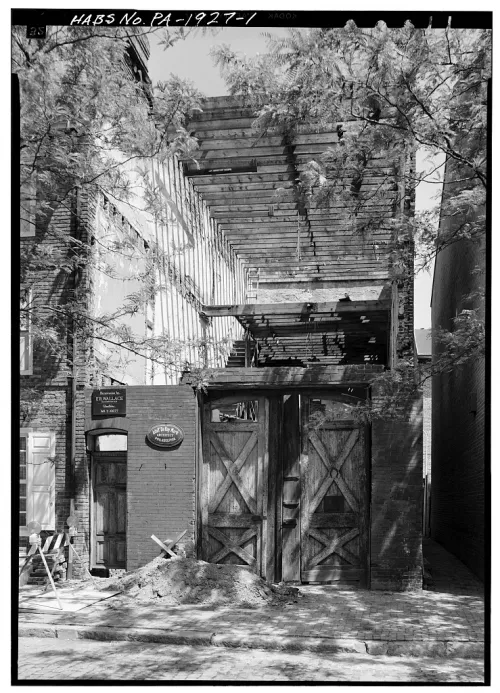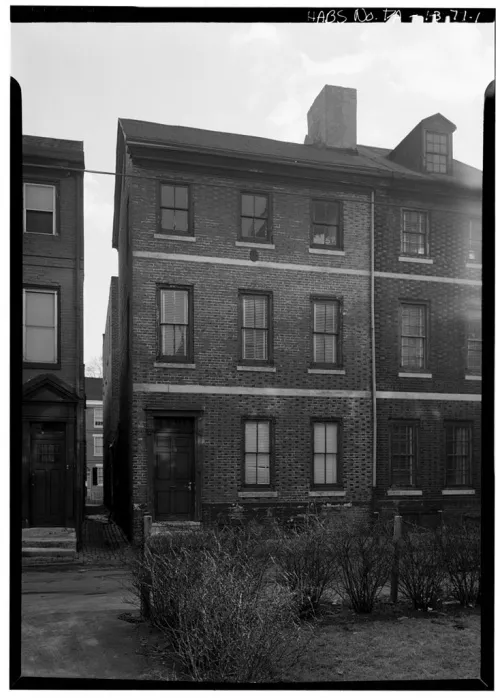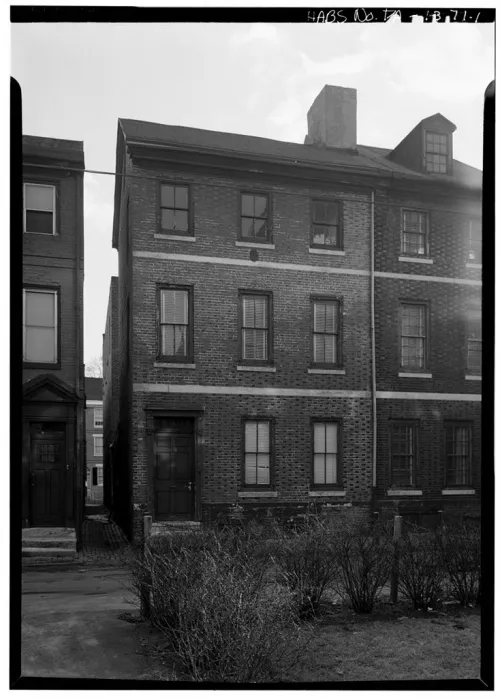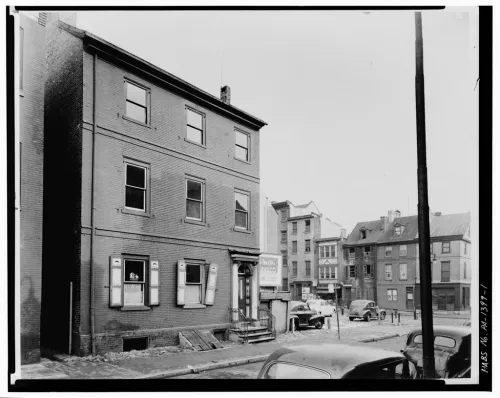Share what you know,
and discover more.
Share what you know,
and discover more.
Jun 05, 2013
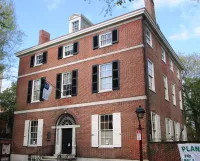
-

- Charmaine Bantugan
Hill–Physick–Keith House
The Hill–Physick–Keith House, also known as the Hill–Keith–Physick House, the Hill–Physick House, or simply the Physick House, is a historic house museum located at 321 S. 4th Street in the Society Hill neighborhood of Philadelphia, Pennsylvania, USA. Built 1786, it was the home of Philip Syng Physick (1768–1837), who has been called "the father of American surgery". The house was declared a National Historic Landmark in 1976. It is now owned and operated by the Philadelphia Society for the Preservation of Landmarks as a house museum. Description and history The Hill–Physick–Keith House stands in the southern part of Philadelphia's Center City, freestanding on a parcel bounded by Delancey, Cypress, and South 4th Streets. It is a three-story brick building with Federal styling. It is covered by a hip roof, and has a three-bay main facade whose levels are separated by stone stringcourses. The main entrance is in the center bay, flanked by sidelight windows and topped by a large half-round transom window. The interior is well appointed with original Federal period features, including numerous marble fireplace surrounds. It is decorated in with Federal and Empire style furnishings, including some that belonged to its most famous owner, Philip Syng Physick. Physick, born in Philadelphia, was trained in London and Edinburgh in surgery, a skill which he brought back to his hometown. He taught surgery and anatomy at the University of Pennsylvania, training an entire generation of new surgeons in the arts he had learned. He was also known for his skills in the operating room, and for the innovative designs of surgical tools he developed. The house was built in 1786 by wealthy Madeira wine importer Henry Hill. It was the residence of Dr. Physick after separating from his wife, Elizabeth Emlen Physick, in 1815, until his death in 1837. The house later fell into dilapidation. In the late 1960s, publisher Walter Annenberg restored the house and then donated it to the Philadelphia Society for the Preservation of Landmarks. Today the house is the only free-standing Federal mansion remaining in the colonial center of Philadelphia. The house is now operated as a museum, with the garden replicating one of the early 19th century. It is open Thursdays through Saturdays, 11am to 4pm, and Sundays, 12pm to 4pm. The building also serves as the headquarters of the State Society of the Cincinnati of Pennsylvania.
Hill–Physick–Keith House
The Hill–Physick–Keith House, also known as the Hill–Keith–Physick House, the Hill–Physick House, or simply the Physick House, is a historic house museum located at 321 S. 4th Street in the Society Hill neighborhood of Philadelphia, Pennsylvania, USA. Built 1786, it was the home of Philip Syng Physick (1768–1837), who has been called "the father of American surgery". The house was declared a National Historic Landmark in 1976. It is now owned and operated by the Philadelphia Society for the Preservation of Landmarks as a house museum. Description and history The Hill–Physick–Keith House stands in the southern part of Philadelphia's Center City, freestanding on a parcel bounded by Delancey, Cypress, and South 4th Streets. It is a three-story brick building with Federal styling. It is covered by a hip roof, and has a three-bay main facade whose levels are separated by stone stringcourses. The main entrance is in the center bay, flanked by sidelight windows and topped by a large half-round transom window. The interior is well appointed with original Federal period features, including numerous marble fireplace surrounds. It is decorated in with Federal and Empire style furnishings, including some that belonged to its most famous owner, Philip Syng Physick. Physick, born in Philadelphia, was trained in London and Edinburgh in surgery, a skill which he brought back to his hometown. He taught surgery and anatomy at the University of Pennsylvania, training an entire generation of new surgeons in the arts he had learned. He was also known for his skills in the operating room, and for the innovative designs of surgical tools he developed. The house was built in 1786 by wealthy Madeira wine importer Henry Hill. It was the residence of Dr. Physick after separating from his wife, Elizabeth Emlen Physick, in 1815, until his death in 1837. The house later fell into dilapidation. In the late 1960s, publisher Walter Annenberg restored the house and then donated it to the Philadelphia Society for the Preservation of Landmarks. Today the house is the only free-standing Federal mansion remaining in the colonial center of Philadelphia. The house is now operated as a museum, with the garden replicating one of the early 19th century. It is open Thursdays through Saturdays, 11am to 4pm, and Sundays, 12pm to 4pm. The building also serves as the headquarters of the State Society of the Cincinnati of Pennsylvania.
Jun 05, 2013
Hill–Physick–Keith House
The Hill–Physick–Keith House, also known as the Hill–Keith–Physick House, the Hill–Physick House, or simply the Physick House, is a historic house museum located at 321 S. 4th Street in the Society Hill neighborhood of Philadelphia, Pennsylvania, USA. Built 1786, it was the home of Philip Syng Physick (1768–1837), who has been called "the father of American surgery". The house was declared a National Historic Landmark in 1976. It is now owned and operated by the Philadelphia Society for the Preservation of Landmarks as a house museum.Description and history
The Hill–Physick–Keith House stands in the southern part of Philadelphia's Center City, freestanding on a parcel bounded by Delancey, Cypress, and South 4th Streets. It is a three-story brick building with Federal styling. It is covered by a hip roof, and has a three-bay main facade whose levels are separated by stone stringcourses. The main entrance is in the center bay, flanked by sidelight windows and topped by a large half-round transom window. The interior is well appointed with original Federal period features, including numerous marble fireplace surrounds. It is decorated in with Federal and Empire style furnishings, including some that belonged to its most famous owner, Philip Syng Physick.
Physick, born in Philadelphia, was trained in London and Edinburgh in surgery, a skill which he brought back to his hometown. He taught surgery and anatomy at the University of Pennsylvania, training an entire generation of new surgeons in the arts he had learned. He was also known for his skills in the operating room, and for the innovative designs of surgical tools he developed.
The house was built in 1786 by wealthy Madeira wine importer Henry Hill. It was the residence of Dr. Physick after separating from his wife, Elizabeth Emlen Physick, in 1815, until his death in 1837. The house later fell into dilapidation. In the late 1960s, publisher Walter Annenberg restored the house and then donated it to the Philadelphia Society for the Preservation of Landmarks. Today the house is the only free-standing Federal mansion remaining in the colonial center of Philadelphia.
The house is now operated as a museum, with the garden replicating one of the early 19th century. It is open Thursdays through Saturdays, 11am to 4pm, and Sundays, 12pm to 4pm. The building also serves as the headquarters of the State Society of the Cincinnati of Pennsylvania.
Posted Date
Sep 30, 2022
Historical Record Date
Jun 05, 2013
Source Name
Wikipedia
Delete Story
Are you sure you want to delete this story?
May 27, 1971
May 27, 1971
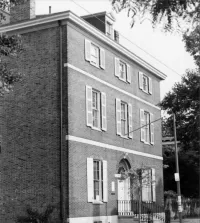
-

- Charmaine Bantugan
National Register of Historic Places - Hill–Physick–Keith House
Statement of Significance: Philip Syng Physick was born July 7, 1768, in Philadelphia. His father was the keeper of the Great Seal and receiver-general of Pennsylvania and Philip grew up in refined surroundings. Although Physiek's father desired that he studies medicine, Philip at first wanted to join his grandfather in the goldsmith craft. Physick's youthful enjoyment of working with his hands in shaping delicate objects later contributed to his success as a surgeon. After attending the Philadelphia Academy, a Quaker school, Physick in 1875 entered the University of Pennsylvania where he studied the arts. Upon graduating he decided to follow his father's advice and began the study of medicine with a local physician, Dr. Adam Kuhn. In 1788 Physick made the at that time obligatory trip to Great Britain to study the latest advances in medicine in London and Edinburgh. In London he received the opportunity to live and work with the great Dr. John Hunter, the leading British anatomist and surgeon of the period. Hunter asked Physick to become his assistant, but after spending a year at London's St. George Hospital as a house surgeon, Physick went to Edinburgh where he graduated in medicine in 1792. Upon returning to Philadelphia Physick entered private practice. At first, he did not attract a distinguished clientele and struggled to build a practice. When Benjamin Rush became his friend, and when Physick became physician to the wealthy Stephen Girard, his practice greatly increased, and he was soon one of Philadelphia's leading physicians. In 1794 he was elected to the staff of the Pennsylvania Hospital. He served on the staff until 1816 and the quality of his teaching greatly enhanced his professional reputation. In 1800 he was appointed surgeon to the Almshouse. He also conducted classes at the University of Pennsylvania, where a special chair of surgery was created for him in 1805. Physick suffered many illnesses throughout his life. As a child he had smallpox and during both the yellow fever epidemics of 1793 and 1798 he contracted the disease while working long hours in the local hospitals. In 1813 he had another attack of fever, probably typhoid, from which he never fully recovered. In 1819 when the University of Pennsylvania suggested that he take over a chair of anatomy, he resigned his chair in surgery. Although Physick continued to practice medicine, his activities declined markedly after approximately 1820. He died in Philadelphia on December 15, 1837.
National Register of Historic Places - Hill–Physick–Keith House
Statement of Significance: Philip Syng Physick was born July 7, 1768, in Philadelphia. His father was the keeper of the Great Seal and receiver-general of Pennsylvania and Philip grew up in refined surroundings. Although Physiek's father desired that he studies medicine, Philip at first wanted to join his grandfather in the goldsmith craft. Physick's youthful enjoyment of working with his hands in shaping delicate objects later contributed to his success as a surgeon. After attending the Philadelphia Academy, a Quaker school, Physick in 1875 entered the University of Pennsylvania where he studied the arts. Upon graduating he decided to follow his father's advice and began the study of medicine with a local physician, Dr. Adam Kuhn. In 1788 Physick made the at that time obligatory trip to Great Britain to study the latest advances in medicine in London and Edinburgh. In London he received the opportunity to live and work with the great Dr. John Hunter, the leading British anatomist and surgeon of the period. Hunter asked Physick to become his assistant, but after spending a year at London's St. George Hospital as a house surgeon, Physick went to Edinburgh where he graduated in medicine in 1792. Upon returning to Philadelphia Physick entered private practice. At first, he did not attract a distinguished clientele and struggled to build a practice. When Benjamin Rush became his friend, and when Physick became physician to the wealthy Stephen Girard, his practice greatly increased, and he was soon one of Philadelphia's leading physicians. In 1794 he was elected to the staff of the Pennsylvania Hospital. He served on the staff until 1816 and the quality of his teaching greatly enhanced his professional reputation. In 1800 he was appointed surgeon to the Almshouse. He also conducted classes at the University of Pennsylvania, where a special chair of surgery was created for him in 1805. Physick suffered many illnesses throughout his life. As a child he had smallpox and during both the yellow fever epidemics of 1793 and 1798 he contracted the disease while working long hours in the local hospitals. In 1813 he had another attack of fever, probably typhoid, from which he never fully recovered. In 1819 when the University of Pennsylvania suggested that he take over a chair of anatomy, he resigned his chair in surgery. Although Physick continued to practice medicine, his activities declined markedly after approximately 1820. He died in Philadelphia on December 15, 1837.
National Register of Historic Places - Hill–Physick–Keith House
Statement of Significance:Philip Syng Physick was born July 7, 1768, in Philadelphia. His father was the keeper of the Great Seal and receiver-general of Pennsylvania and Philip grew up in refined surroundings. Although Physiek's father desired that he studies medicine, Philip at first wanted to join his grandfather in the goldsmith craft. Physick's youthful enjoyment of working with his hands in shaping delicate objects later contributed to his success as a surgeon. After attending the Philadelphia Academy, a Quaker school, Physick in 1875 entered the University of Pennsylvania where he studied the arts. Upon graduating he decided to follow his father's advice and began the study of medicine with a local physician, Dr. Adam Kuhn.
In 1788 Physick made the at that time obligatory trip to Great Britain to study the latest advances in medicine in London and Edinburgh. In London he received the opportunity to live and work with the great Dr. John Hunter, the leading British anatomist and surgeon of the period. Hunter asked Physick to become his assistant, but after spending a year at London's St. George Hospital as a house surgeon, Physick went to Edinburgh where he graduated in medicine in 1792.
Upon returning to Philadelphia Physick entered private practice. At first, he did not attract a distinguished clientele and struggled to build a practice. When Benjamin Rush became his friend, and when Physick became physician to the wealthy Stephen Girard, his practice greatly increased, and he was soon one of Philadelphia's leading physicians. In 1794 he was elected to the staff of the Pennsylvania Hospital. He served on the staff until 1816 and the quality of his teaching greatly enhanced his professional reputation. In 1800 he was appointed surgeon to the Almshouse. He also conducted classes at the University of Pennsylvania, where a special chair of surgery was created for him in 1805.
Physick suffered many illnesses throughout his life. As a child he had smallpox and during both the yellow fever epidemics of 1793 and 1798 he contracted the disease while working long hours in the local hospitals. In 1813 he had another attack of fever, probably typhoid, from which he never fully recovered. In 1819 when the University of Pennsylvania suggested that he take over a chair of anatomy, he resigned his chair in surgery. Although Physick continued to practice medicine, his activities declined markedly after approximately 1820. He died in Philadelphia on December 15, 1837.
Posted Date
Sep 30, 2022
Historical Record Date
May 27, 1971
Source Name
National Register of Historic Places
Source Website
Delete Story
Are you sure you want to delete this story?
